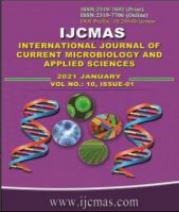


 National Academy of Agricultural Sciences (NAAS)
National Academy of Agricultural Sciences (NAAS)

|
PRINT ISSN : 2319-7692
Online ISSN : 2319-7706 Issues : 12 per year Publisher : Excellent Publishers Email : editorijcmas@gmail.com / submit@ijcmas.com Editor-in-chief: Dr.M.Prakash Index Copernicus ICV 2018: 95.39 NAAS RATING 2020: 5.38 |
India’s total farmers has 67.10 per cent marginal (below 1 ha.) followed by 17.91 per cent small (1-2 ha.). Indian agriculture thus dominated by marginal and small farmers who have very low land holdings, therefore raising productivity has been found to be the most important factor for increasing the income levels of farmers. Watershed management has been found to be influential programme for achieving this target. HP Mid-Himalayan Watershed Development Project - an integrated multisectoral Watershed Development Project has been operated in Mid Hills of Himachal Pradesh in 10 districts of the state from 2005 to 2017. The study has been carried out in the purposively selected Solan, Sirmour and Mandi districts of the state by selecting randomly a sample of 270 respondents comprising of 180 beneficiaries + 90 non-beneficiaries, in terms of 2:1 ratio for the comparison of both the categories of respondents. This study has put emphasis on land use pattern, cropping pattern, productivity, income and benefit cost ratio. Results revealed that beneficiaries have put more area under cultivation (0.56 ha) and have more irrigated land (0.36 ha) as compared to non-beneficiaries (0.20 ha) which lead to increase in cropping intensity (196.51 %) on their farms. The study recommends that positive impact to be recorded on farmers’ productivity and benefit-cost ratio of important crops as of project and investigation should be intensified at the farm level for growers to benefit.
 |
 |
 |
 |
 |